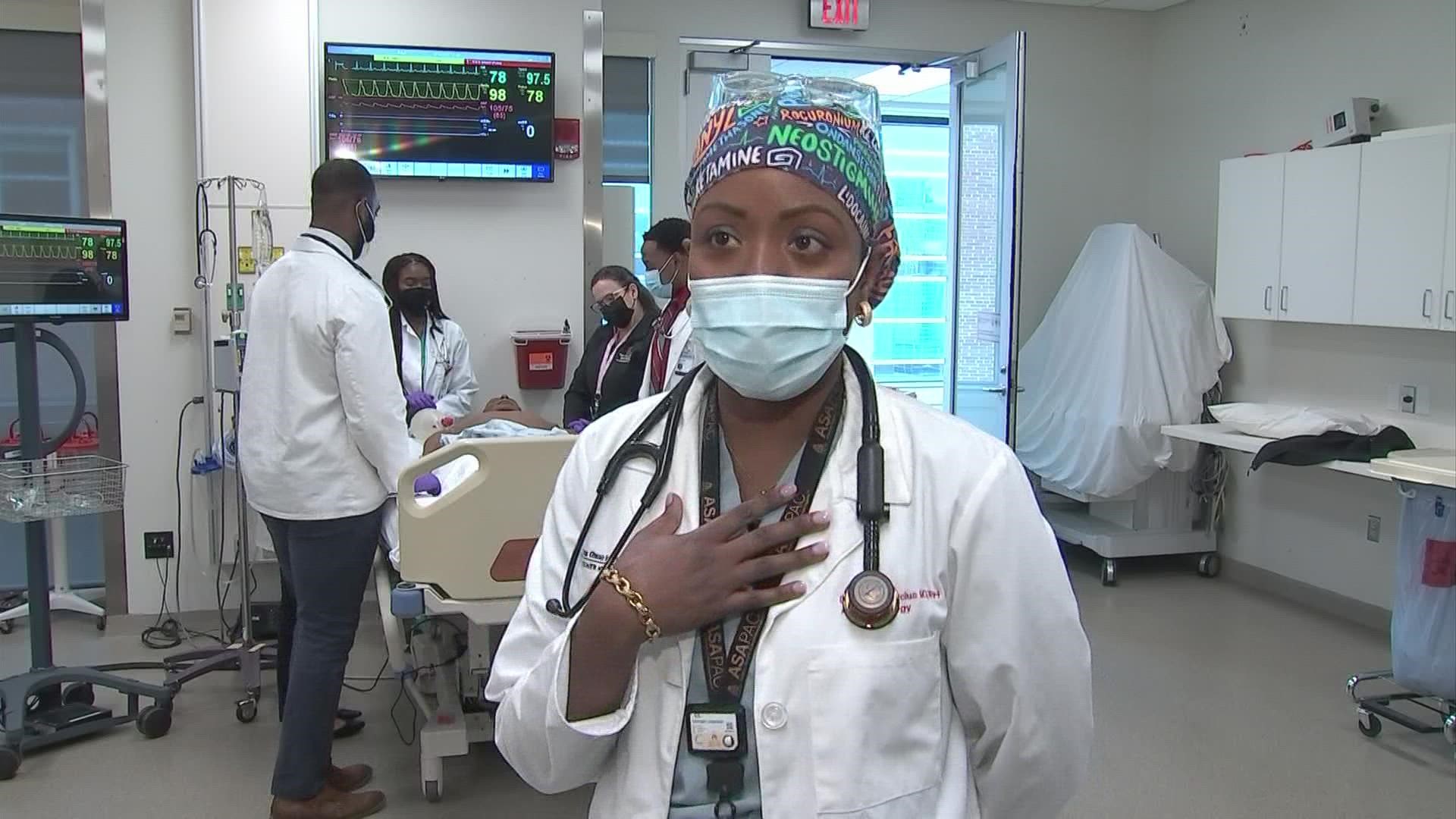COLUMBUS, Ohio — You’ve probably noticed medical pictures lining your doctor’s office or your primary care facility, but have you seen one featuring a person of color?
A medical student from Ukraine is trying to change that.
In December, Chidiebere Ibe posted an illustration of a Black fetus in the womb. It went viral within weeks sparking a conversation about the first time many had seen a depiction of a dark-skinned fetus or pregnant woman.
Ibe is a medical illustrator and what he created has now sparked a conversation about representation within medical curriculum.
The National Library of Medicine did a study in 2018 looking at 4,146 images featured in medical textbooks from the top medical schools across the U.S.
It found of those images surveyed, 74.5% were light-skinned, 21% were medium skinned and 4.5% were darker-skinned.
The study found even though “medical texts often have overall proportional racial representation this is not the case for skin tone. Furthermore, racial minorities are still often absent at the topic level.”
Leaders at The Ohio State Unversity College of Medicine say they are now making it a mission to diversify the medical curriculum in the classroom, during clinicals and through conversation.
One of the newest additions is dark-skinned manikins used for medical training and simulations with medical students.
“They can respond to things like electric shocks and can respond to the medications that could be administered so they are very realistic piece of equipment,” Dr. Sheryl Pfeil, a professor and physician at The Ohio State University Wexner Medical Center, said.
“I think when you have simulated patients or manikins that have a more diverse appearance, I think you are sending a very important message to the learner,“ said Pfeil.
Demicha Rankin is the Vice Chair of Diversity, Equity, and Inclusion in the Department of Anesthesiology at Ohio State. She says representation in the curriculum is crucial for medical students.
“Representation absolutely matters. It matters for reasons that are not often measurable,” said Rankin. “It extends to making sure our faculty have the skills to be able to talk about racism or health care disparities in a comfortable manner and an informative manner.”
She says the university offers a course to first years about racism, health and health care delivery. Another course is offered to fourth-year students is an advanced medical ethics course that dives deep into the African American experience in the health care system.
Daphney Dorcius is from Haiti, grew up in Miami, Florida and is now pursuing her dream in health care at Ohio State. She still remembers the first time she saw a dark-skinned manikin in training courses.
“The first time I saw a mannequin that actually looked like me was during anesthesia training. It's really amazing and really touched me to know that I can train with people and mannequins that are representative of us.”

